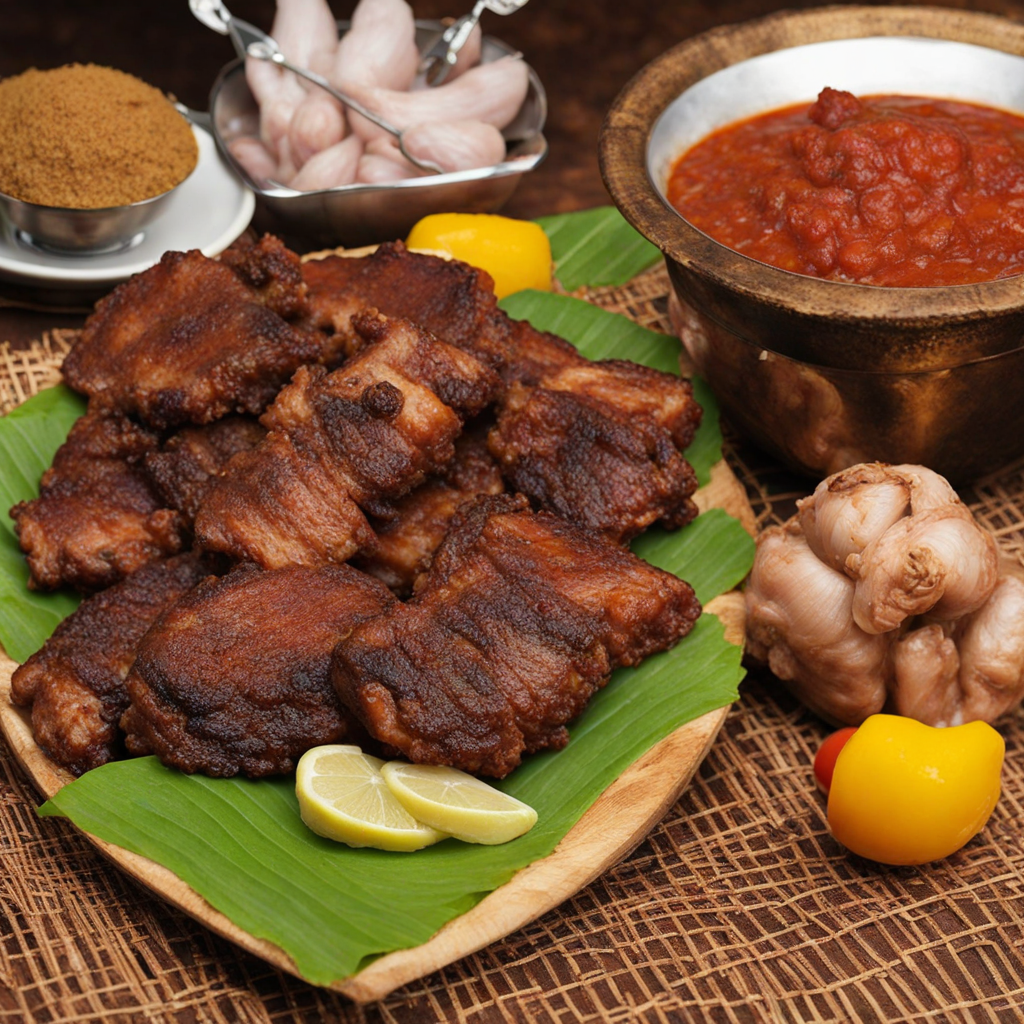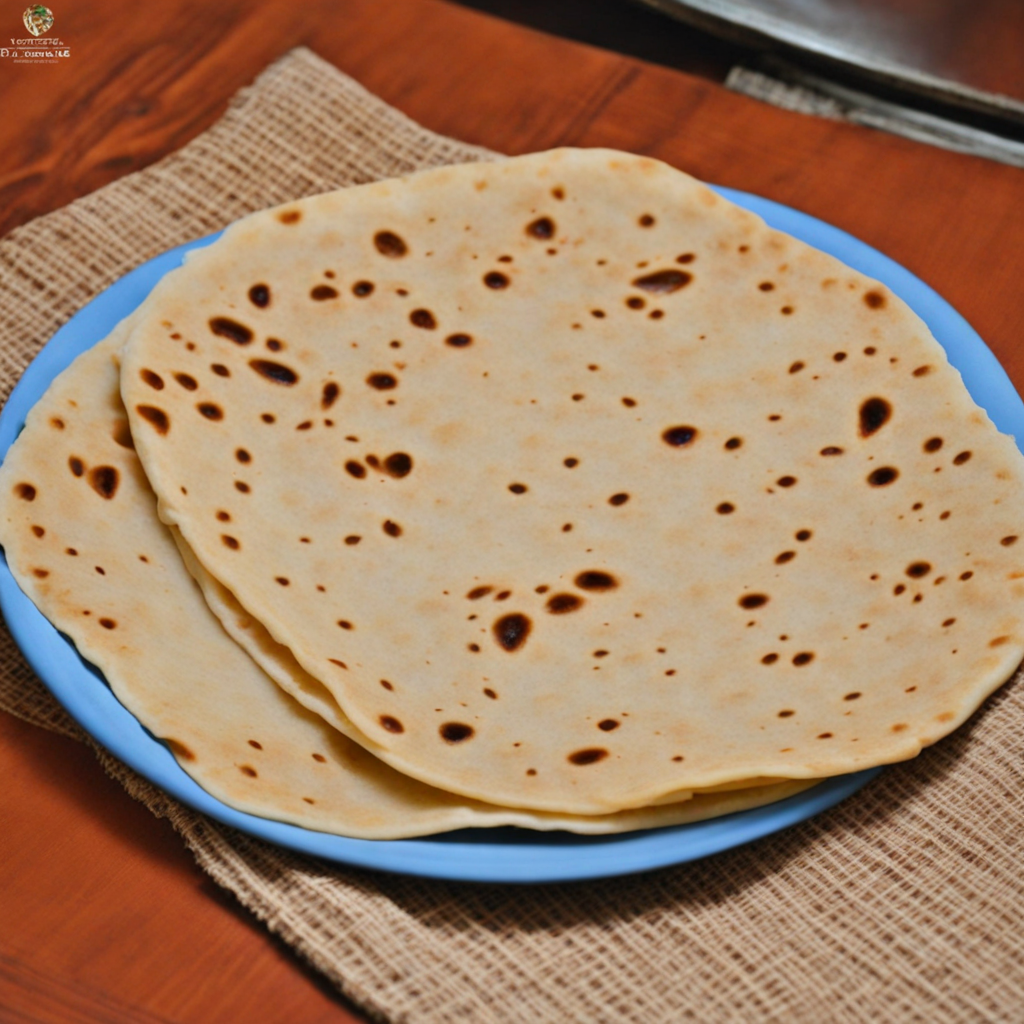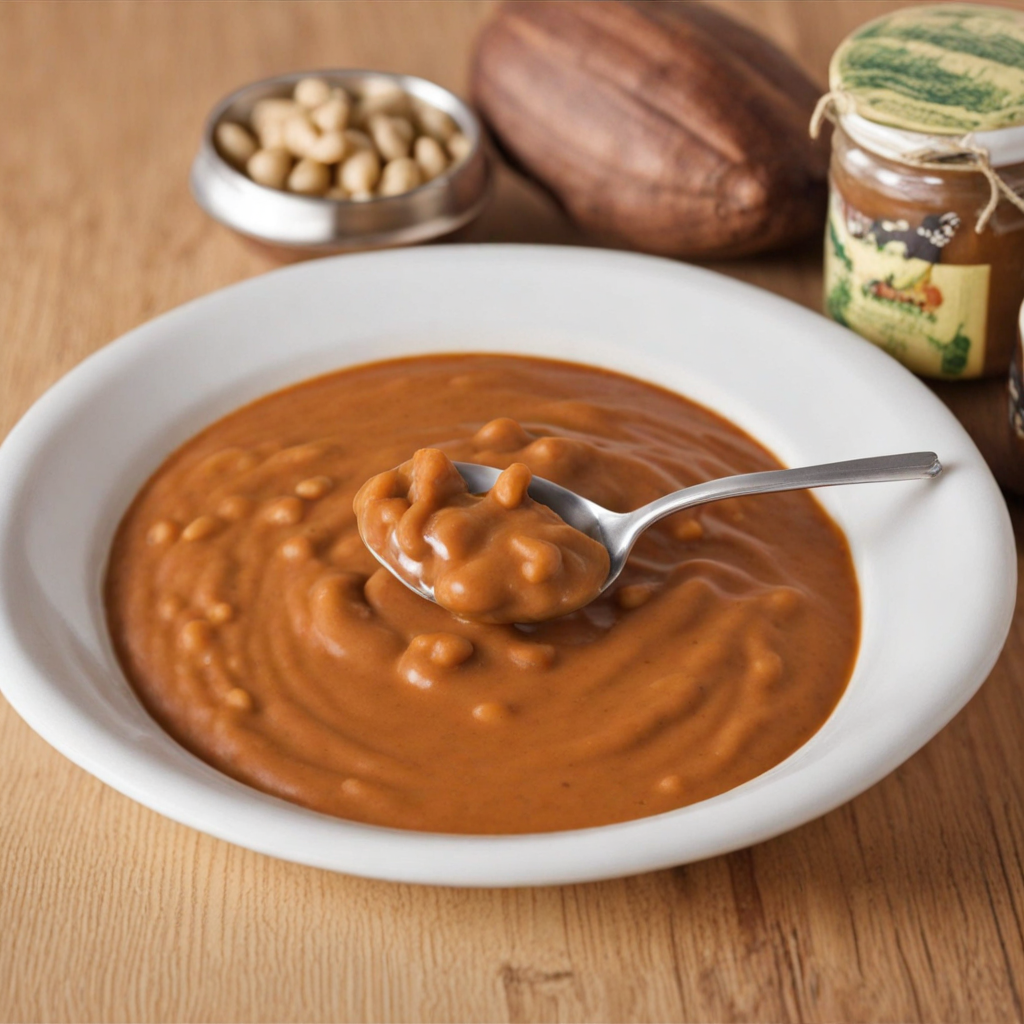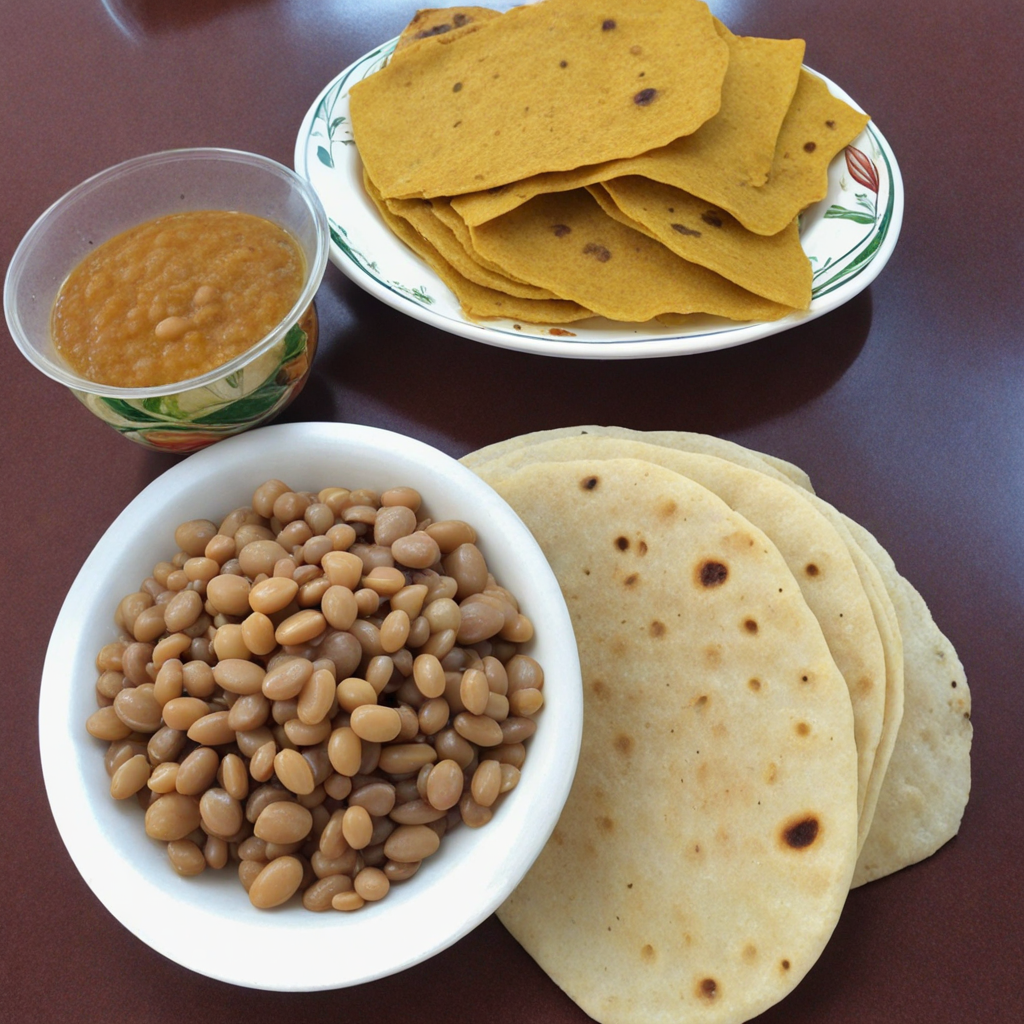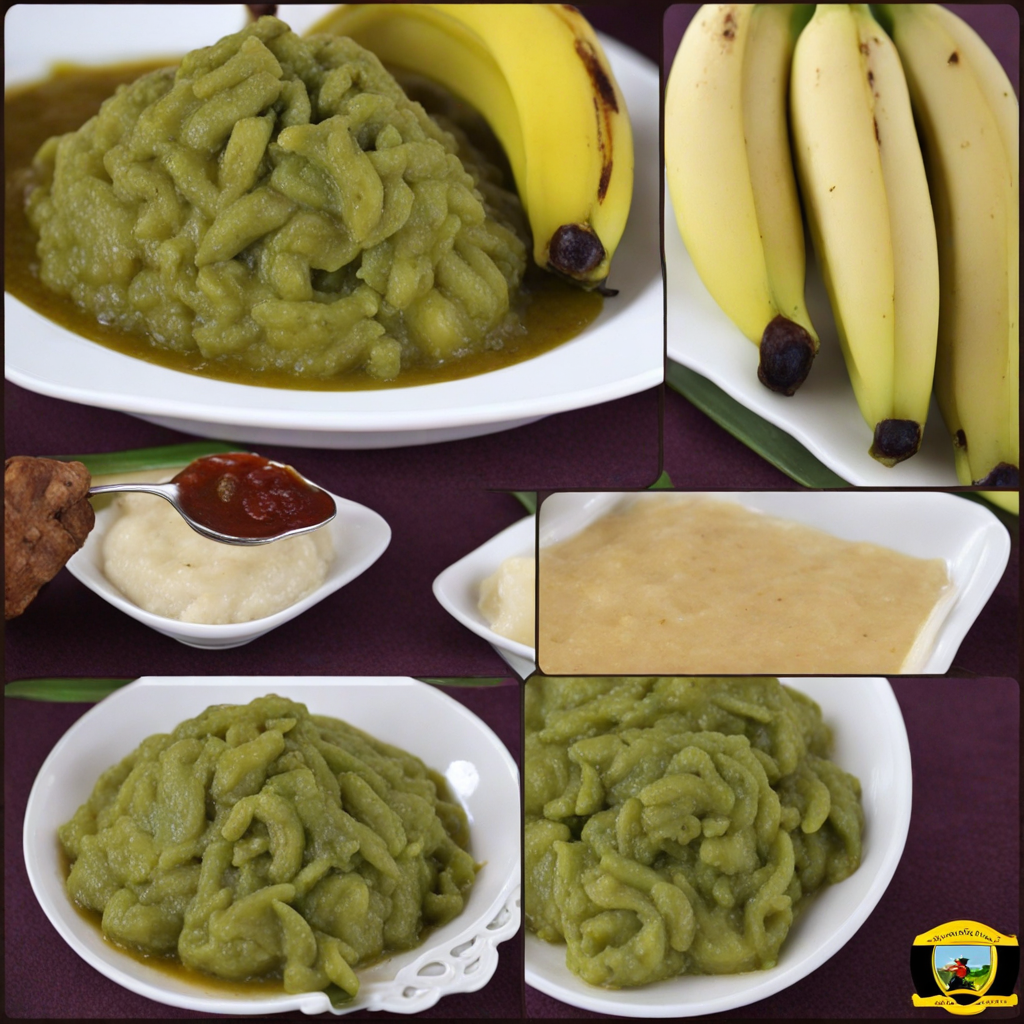Muchomo
Muchomo is a delightful Ugandan dish that showcases the vibrant flavors of grilled meat, often skewered for easy handling. Typically prepared with beef, goat, or chicken, the meat is marinated in a blend of spices and herbs that can include garlic, ginger, and local seasonings. The grilling process not only enhances the meat’s natural flavors but also adds a smoky aroma that tantalizes the senses. Muchomo is often served with a side of Ugandan staples such as posho (maize porridge) or matoke (steamed plantains), making it a filling and satisfying meal. The preparation of Muchomo is a communal affair, often enjoyed during social gatherings, barbecues, or celebrations. As the meat cooks over an open flame, the enticing scent wafts through the air, drawing people together. It’s common to find vendors selling Muchomo at roadside stalls, where the dish is enjoyed by locals and visitors alike. The experience of sharing Muchomo with friends or family while sitting around a fire adds to its charm, creating a warm and inviting atmosphere that embodies Ugandan culture. To elevate the experience, Muchomo is frequently accompanied by a variety of dipping sauces, such as spicy chili sauce or a tangy peanut sauce, which complement the smoky flavors of the grilled meat. Some variations may include vegetables or fish as well, catering to different tastes and preferences. Each bite of Muchomo delivers a burst of flavor that reflects the rich culinary heritage of Uganda, making it an unforgettable experience for anyone looking to explore new and exciting tastes.
How It Became This Dish
Muchomo: A Culinary Journey Through Uganda Muchomo, a popular Ugandan delicacy, embodies the essence of the nation’s rich culture, agricultural abundance, and communal spirit. This dish, which primarily consists of grilled meat, often beef or goat, has evolved over centuries, reflecting the intricate tapestry of Uganda’s history and the diverse influences that have shaped its cuisine. #### Origins of Muchomo The roots of Muchomo can be traced back to the indigenous tribes of Uganda. Historically, these tribes were nomadic pastoralists who relied heavily on livestock for sustenance. The practice of grilling meat over an open flame emerged as a practical solution for preserving and preparing food in the absence of modern cooking facilities. The word "Muchomo" itself is derived from the Luganda language, where "muchomo" means "roasted" or "grilled." The traditional methods of preparing Muchomo involved skewering chunks of meat on sticks and grilling them over a wood fire. This method not only imparted a smoky flavor to the meat but also made it a communal activity where family and friends would gather to share the experience. The use of locally sourced spices and herbs, such as garlic, ginger, and chili peppers, added layers of flavor, making Muchomo a beloved dish among the local populace. #### Cultural Significance Muchomo holds a special place in Ugandan society and is more than just a meal; it is a symbol of community and celebration. In Ugandan culture, food is often at the center of gatherings, be it family reunions, weddings, or traditional ceremonies. Muchomo is frequently served during these events, signifying hospitality and the importance of sharing a meal with loved ones. The dish also plays a role in Uganda’s social fabric. In urban areas, street vendors often grill Muchomo, serving it with ugali (a type of maize porridge), kachumbari (a fresh tomato and onion salad), or fried plantains. This street food culture has become integral to the experience of Ugandan city life, where people gather to enjoy Muchomo as a quick and flavorful meal. The aroma of grilled meat wafting through the streets is an invitation to indulge, fostering a sense of camaraderie among patrons. #### Development Over Time As Uganda has evolved, so too has Muchomo. The dish has adapted to various influences while maintaining its core identity. The introduction of urbanization and globalization in the late 20th century has led to an increased interest in culinary diversity, prompting Ugandans to experiment with different meats and cooking techniques. In recent years, Muchomo has expanded beyond its traditional roots. While beef and goat remain the primary meats used, chicken and fish have also become popular choices, catering to a wider range of tastes and dietary preferences. Additionally, the rise of health consciousness among consumers has prompted some vendors to offer grilled options that are lower in fat and calories compared to fried foods. One of the most exciting developments in the world of Muchomo is its incorporation into contemporary culinary practices. Chefs and food enthusiasts have begun to elevate Muchomo by incorporating gourmet ingredients, such as marinades infused with local fruits or spices, and presenting the dish in innovative ways. This fusion of traditional and modern techniques has helped Muchomo gain recognition beyond Uganda’s borders, attracting food lovers who seek authentic yet adventurous culinary experiences. #### The Role of Muchomo in Tourism Muchomo has also become a significant attraction for culinary tourism in Uganda. As travelers seek out authentic experiences, local dishes like Muchomo provide a connection to the culture and history of the region. Food festivals and events showcasing traditional Ugandan cuisine often feature Muchomo as a highlight, allowing visitors to engage with local chefs and learn about the preparation methods firsthand. Moreover, the increasing popularity of Muchomo has led to the establishment of specialized restaurants and food stalls dedicated solely to this dish. These venues often showcase not just the grilling techniques but also the cultural stories behind Muchomo, further enriching the dining experience. The interaction between locals and tourists surrounding this dish fosters cross-cultural exchanges, creating a deeper appreciation for Uganda’s culinary heritage. #### Challenges and Resilience Despite its popularity, Muchomo faces challenges related to sustainability and food safety. The demand for meat has raised concerns about livestock management and environmental impact. However, many Ugandan farmers are becoming more aware of sustainable practices, including organic farming and ethical treatment of animals, ensuring that Muchomo can continue to be enjoyed without compromising future resources. The resilience of Muchomo as a culinary staple speaks to the ongoing evolution of Ugandan cuisine. As the country navigates the complexities of modern life, Muchomo remains a comforting reminder of home, tradition, and community. Its adaptability highlights the balance between honoring age-old practices and embracing contemporary influences. #### Conclusion Muchomo is more than just grilled meat; it is a culinary narrative woven into the fabric of Ugandan society. From its origins among pastoral tribes to its status as a beloved street food and a symbol of celebration, Muchomo captures the spirit of Uganda. As the dish continues to evolve in response to changing tastes and cultural dynamics, it stands as a testament to the richness of Ugandan heritage, inviting both locals and visitors alike to gather around the grill and partake in the shared joy of food. Through Muchomo, the flavors of Uganda tell a story of history, culture, and community—a savory reminder of the ties that bind us all.
You may like
Discover local flavors from Uganda


